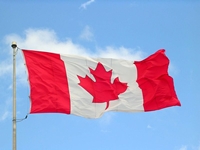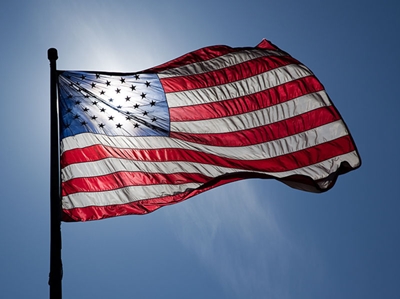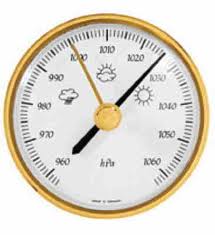
 Michael Leahy, www.great-lakes-sailing.com
Michael Leahy, www.great-lakes-sailing.comENTERING CANADA
As an American citizen, you must report to Canada Border Services Agency (CBSA) for inspection upon entering Canadian waters.
Entering Canada occurs when you cross the international boundary and enter Canadian waters. This is different from the US regulations which require you to report when your vessel first comes to rest in US waters, whether at anchor or at a dock.
This reporting requirement applies whether you land (ie dock), anchor or enter a river or canal system.
It applies if you are 'weaving' in and out of Canadian waters – for example while engaged in recreational fishing.
The only exception is if you are “in transit”, defined as proceeding directly from 1 point outside of Canada to another point outside of Canada in a continuous, uninterrupted passage with no delays or stop-overs. This is not considered to be entering Canada.
Here are the various situations which you may encounter entering Canada:
A) If you have left the United States and landed on Canadian soil (eg – docked at your favourite yacht club or marina), you must report to a CBSA marine reporting site and then call the Telephone Reporting Centre (TRC) at 1888-226-7277 (1-888 CANPASS), using the telephone reserved for this, to obtain clearance. Only the Master may leave the vessel to carry out this reporting procedure. Neither passengers nor goods may leave the vessel until it has been cleared into Canada.
B) If you are entering Canadian waters but do not land on Canadian soil, you still must report to CBSA. However, you can use your cell phone to call the TRC (1-888-226-7277 / 1888-CANPASS).
If you change your mind and decide you want to land on Canadian soil, even though you reported in by cell phone upon entering Canada, you must still report to a CBSA marine reporting site and then call the Telephone Reporting Centre (TRC) at 1888-226-7277 (1-888 CANPASS) ,using the telephone reserved for this, to obtain clearance. Only the Master may leave the vessel to carry out this reporting procedure. Neither passengers nor goods may leave the vessel until it has been cleared into Canada.
If you are entering Canadian waters with no intention to land on Canadian soil and do not have a cell phone to call in, you must report to a CBSA marine reporting site and then call the Telephone Reporting Centre (TRC) at 1888-226-7277 (1-888 CANPASS),using the telephone reserved for this, to obtain clearance. Only the Master may leave the vessel to carry out this reporting procedure. Neither passengers nor goods may leave the vessel until it has been cleared into Canada.
C) If you are 'weaving' in and out of Canadian waters (not in transit, as defined above) you must call the TRC (1-888-226-7277 / 1-888-CANPASS) upon first entering Canada to obtain clearance. However, you only have to do this the first time you enter Canadian waters.
When you call the TRC, expect a series of questions about the purpose of your trip, about yourself and any passengers, your vessel and any goods being declared. Keep your answers direct, to the point and professional. The CBSA officer will determine if any further inspection is required. If not, you will be given a clearance number. This number is your release and approval to enter Canada. Have a pen and paper ready to record it - preferably in your ship's log. You will need it at hand throughout your stay in Canada.
If the CBSA officer decides that a further inspection is required, the Master will be ordered to ensure that all passengers and goods remain on board until an inspection team arrives.
DOCUMENTS
If you are a citizen of the United States, you do not need a passport to enter Canada. The preferred identification document is the NEXUS Card. It will allow for remote clearing. To use it, ALL persons on board must have a NEXUS card. Otherwise, entry must be done in person at a designated port of entry.
You and all on board, should always carry proof of your citizenship, such as a passport, birth certificate, certificate of citizenship or naturalization, as well as photo identification.
MINOR CHILDREN
Parents who share custody of their children should carry copies of the legal custody documents. It is also recommended that they have a consent letter from the other custodial parent to take the child on a trip out of the country. The parents’ full name, address and telephone number should be included in the consent letter. Although not necessary, the letter could be notarized to confirm its validity.
Adults who are not parents or guardians should have written permission from the parents or guardians to be entering Canada with them and to supervise the children. The consent letter should include addresses and telephone numbers where the parents or guardian can be reached.
CBSA officers watch for missing children and may ask detailed questions about the children who are traveling with you.
RETURNING TO THE UNITED STATES
The Master of any American pleasure boat must report to Customs immediately after arriving into the US from a foreign port or place and must also report any foreign merchandise on his boat that is subject to duty. The report may be made by any means of communication and should include the name of the boat, its nationality, name of the master, place of docking and arrival time. If an inspection is required, the Customs officer will direct the vessel to an inspection area.
Here is a link to the Canadian Border Services Agency that will give you additional information on entering Canada.
This link to CBSA will give you the location of all telephone reporting sites in Ontario.



 Atmospheric pressure is also known as barometric pressure and is
measured by a barometer. A competent sailor keeps a weather eye on the
barometer and is aware of changes in pressure. Changes in pressure are
measure in either inches (Imperial measure used in the United States) or
millibars (metric used in Canada).
Atmospheric pressure is also known as barometric pressure and is
measured by a barometer. A competent sailor keeps a weather eye on the
barometer and is aware of changes in pressure. Changes in pressure are
measure in either inches (Imperial measure used in the United States) or
millibars (metric used in Canada). 







